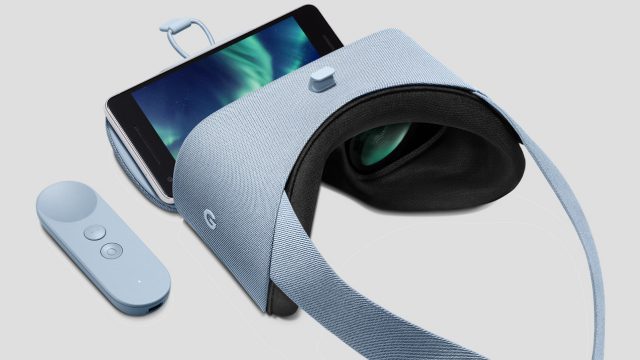
It was abundantly clear by earlier this year that Google’s interest in its Android-based Daydream VR platform had withered, but now the company has put the final nail in the coffin by discontinuing the Daydream View headset and confirming that its newest Pixel 4 smartphone isn’t compatible.
Google had monstrous ambitions for Daydream at the start. The company figured that developers would leap at the opportunity to build VR apps on its platform thanks to theoretical chance they could reach to hundreds of millions of existing Android users. But things didn’t turn out as they hoped. The company’s bet (which was in line with others at the time) that slotting smartphones into inexpensive VR viewers would be a great way to use VR just didn’t pan out.
As of Google I/O earlier this year, it was entirely clear that Google had lost faith in Daydream, but today they put the final nail in the coffin.
With minimal adoption after several years, Google today confirmed that it will stop selling its Daydream View headset, the company told Variety. While the company had been pretty good about maintaining Daydream compatibility with its own ‘Pixel’ smartphone line and a handful of other Android phones, the new Pixel 4 won’t support the Daydream View.
If you have a compatible phone, the Dayream store, apps, and headset will continue to function. Google told Variety:
There hasn’t been the broad consumer or developer adoption we had hoped, and we’ve seen decreasing usage over time of the Daydream View headset. So while we are no longer selling Daydream View or supporting Daydream on Pixel 4, the Daydream app and store will remain available for existing users.
We saw a lot of potential in smartphone VR—being able to use the smartphone you carry with you everywhere to power an immersive on-the-go experience. But over time we noticed some clear limitations constraining smartphone VR from being a viable long-term solution. Most notably, asking people to put their phone in a headset and lose access to the apps they use throughout the day causes immense friction.
Google’s first Daydream View headset launched at the end of 2016, and offered a reasonably good casual VR experience, but wasn’t quite as compelling as its nearest competitor, Gear VR. Google released an updated version of the View in 2017 which made some important improvements, but hasn’t done anything with the headset since.

Despite the low cost and wide accessibility of Daydream and even Gear VR, smartphone VR ultimately succumbed to a handful of pain points. Not only did the slot-in approach lack the full 6DOF experience of high-end headsets, putting your smartphone into a headset could be cumbersome, and using the headset also meant draining your precious smartphone battery and temporarily not having access to the phone itself, which has become an integral part of many people’s lives.
From the ashes of the slot-in smartphone viewers, standalone headsets like Oculus Quest bring many of the same benefits (and then some) while avoiding much of the friction of getting your smartphone involved. Granted, Lenovo launched a Daydream standalone headset, the Mirage Solo, in 2018 but its poor ergonomics and odd combination of a 3DOF controller with 6DOF headset failed to garner much attention.
The post Google Discontinues Daydream View Headset, the Final Nail in the Coffin for its Android VR Ambitions appeared first on Road to VR.
from Road to VR https://ift.tt/2IQeCze
via IFTTT
No comments:
Post a Comment